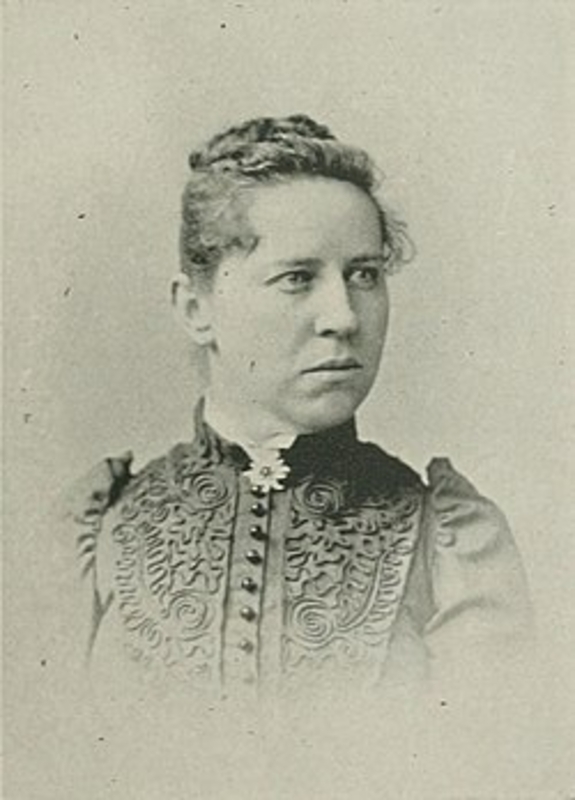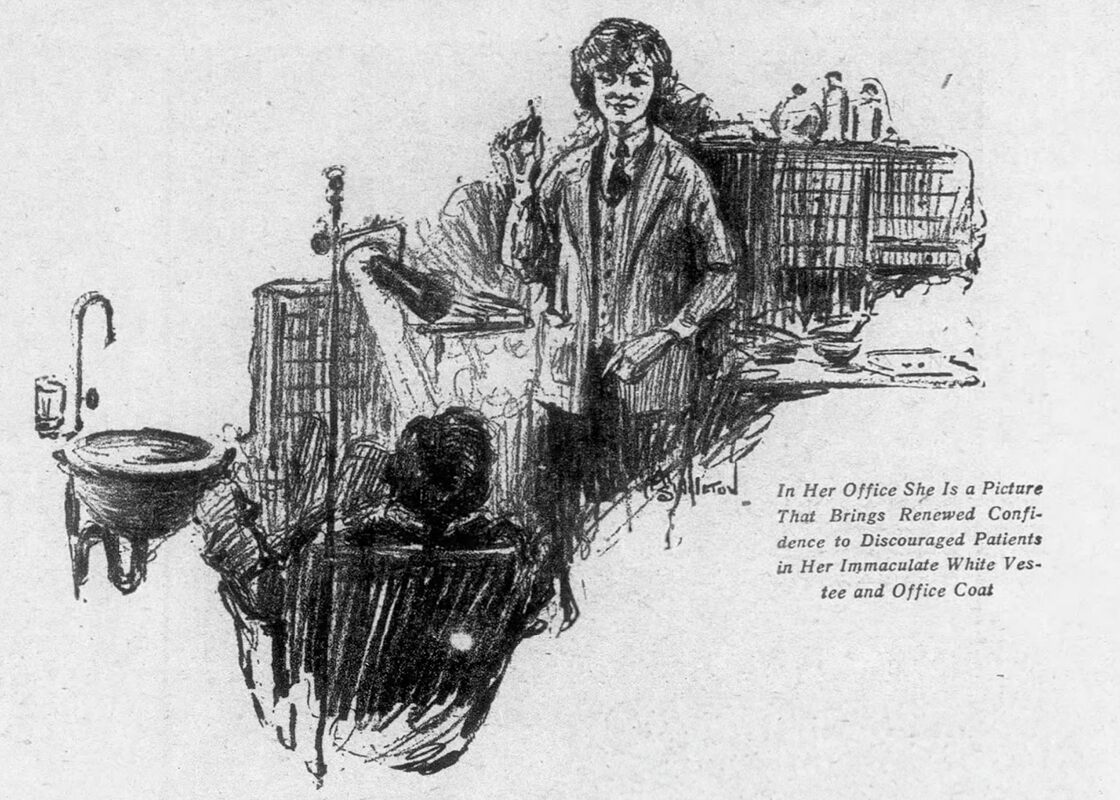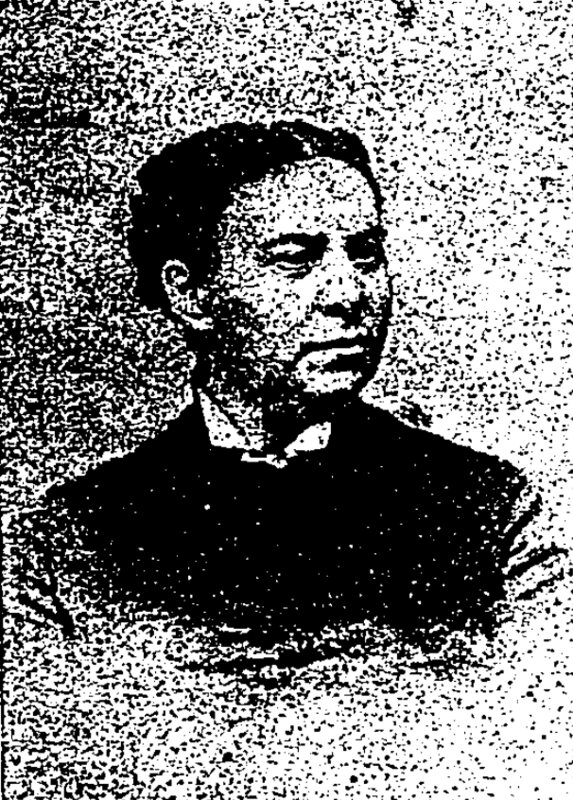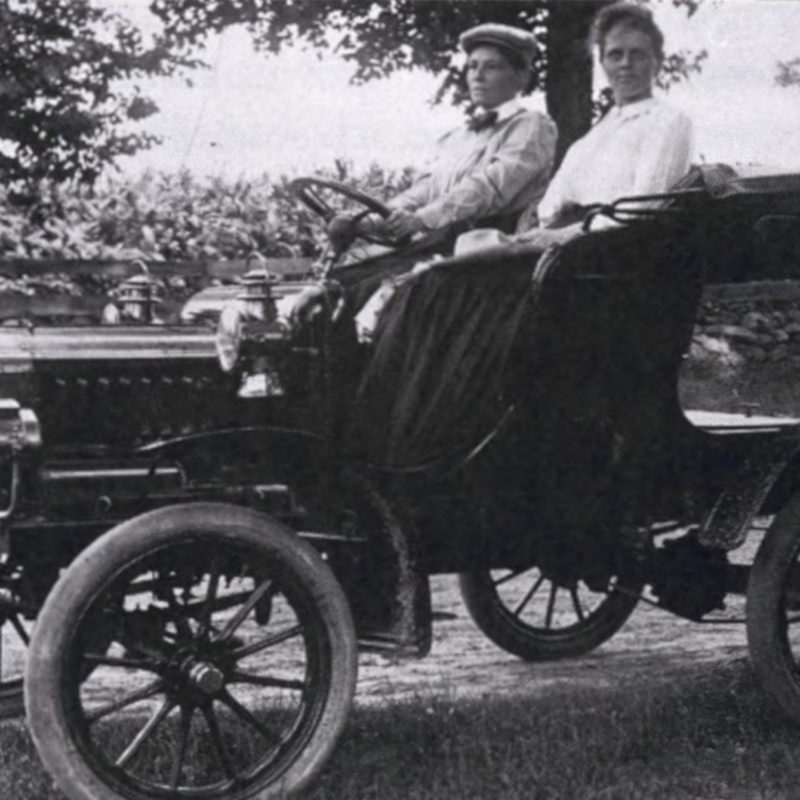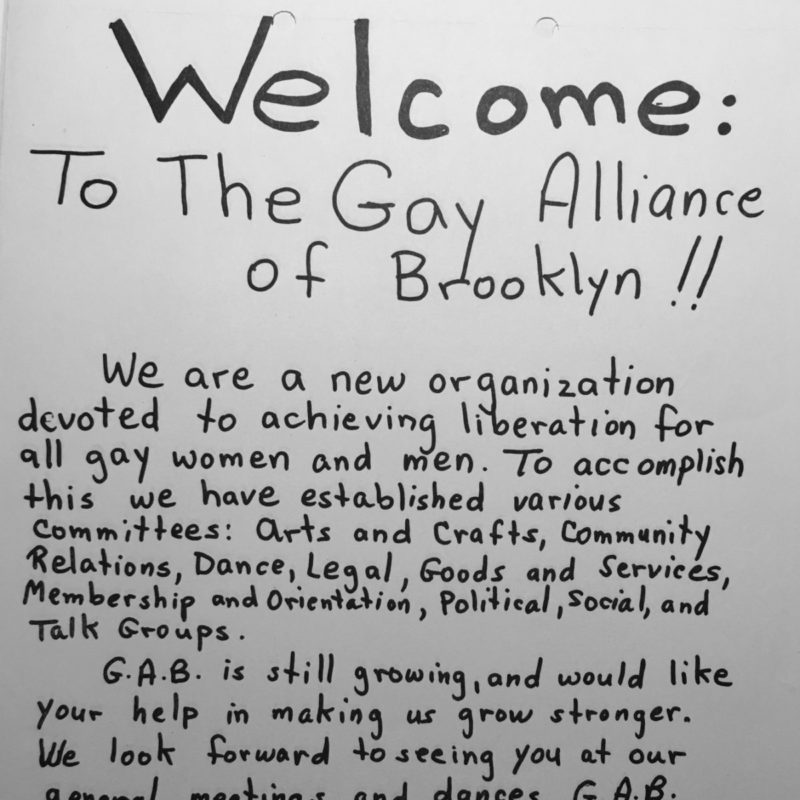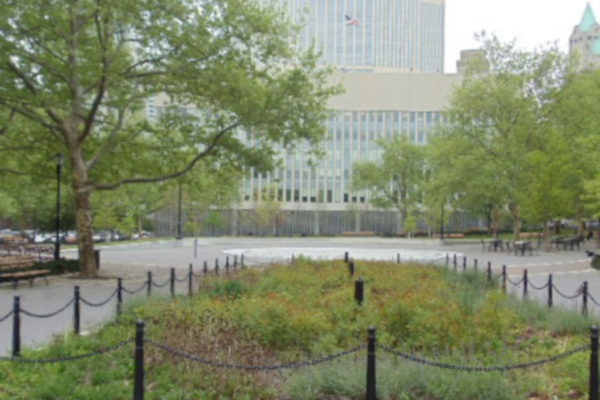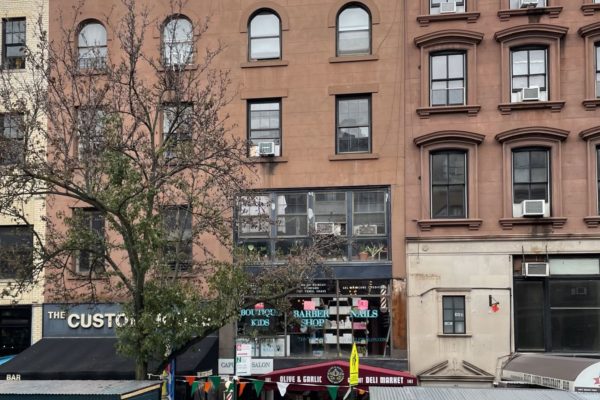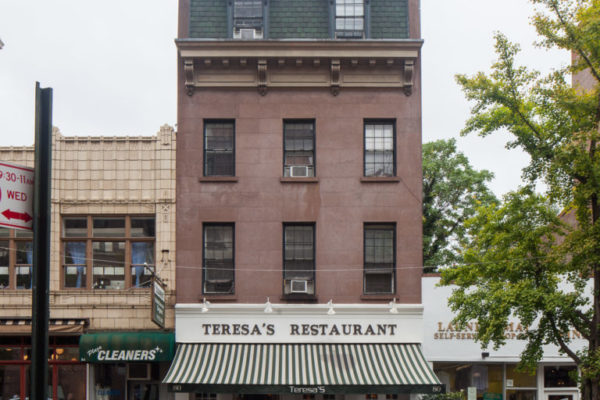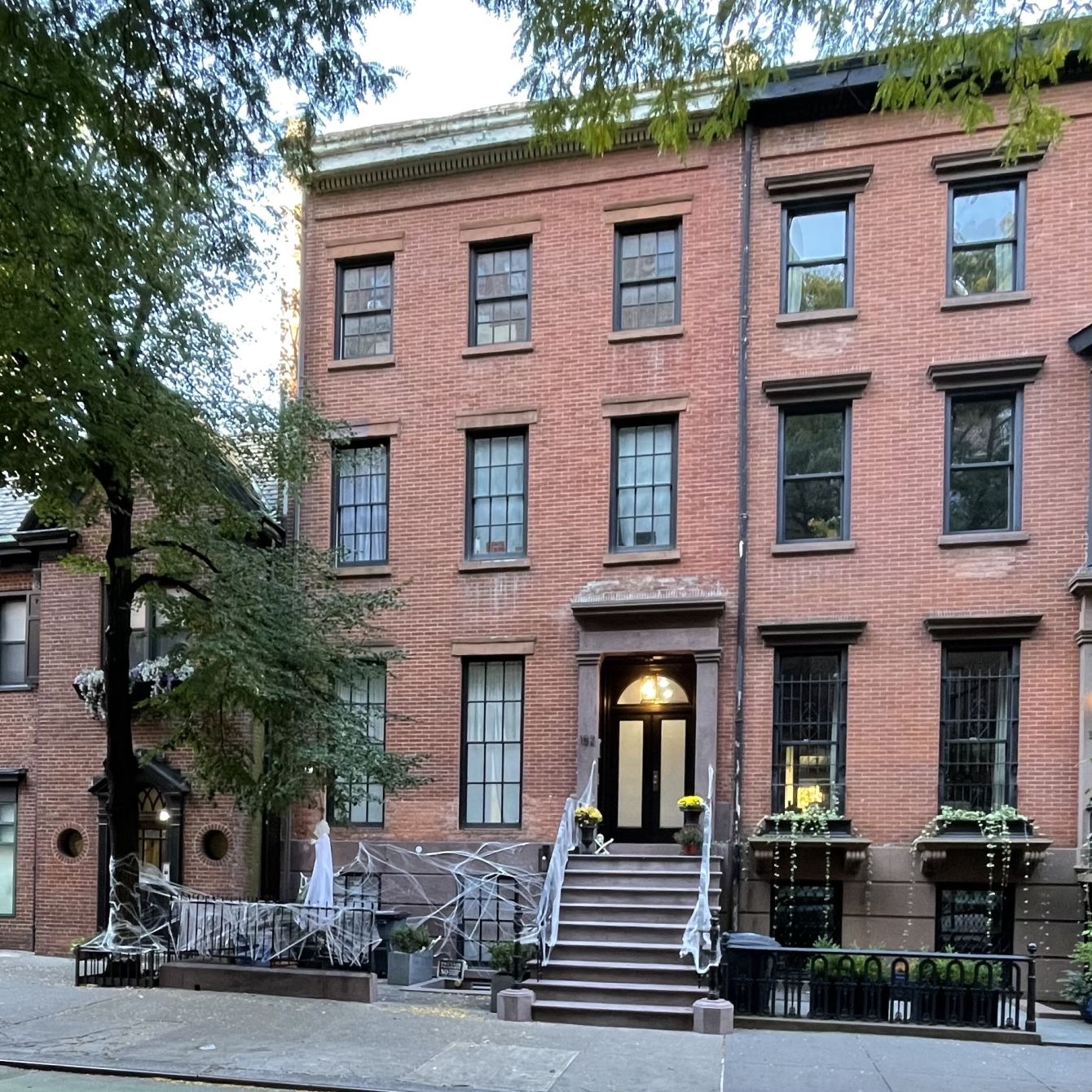
L. Adele Cuinet & Helen Severine Lassen Residence & Medical Offices
overview
Beginning in the 1890s, this Brooklyn Heights rowhouse was the home of long-term partners L. Adele Cuinet, a pioneering female dentist, and Helen S. Lassen, a medical doctor.
Both Cuinet and Lassen had their medical offices in the house, with Cuinet practicing here for 40 years.
On the Map
VIEW The Full MapHistory
Following the mid-19th century success of Elizabeth Blackwell, Emily Blackwell, and Marie Elizabeth Zakrzewska in becoming doctors, other American women were slowly granted degrees as doctors and dentists, although even by the early years of the 20th century their numbers remained small. As with the women who entered other professions, including social work, education, and labor reform, many of the early women medical practitioners were involved in same-sex relationships. This includes Dr. Louise Adèle Cuinet (her name generally appears as L. Adele Cuinet, 1854-1933), Brooklyn’s first female dentist, and her partner Dr. Helen Severine Lassen (1840-1920), who lived together in the rowhouse at 152 Henry Street in Brooklyn Heights, where they both also maintained their offices.
Cuinet was born in Hoboken, New Jersey, to a family of French Huguenot descent. She graduated at the top of her class from the Pennsylvania College of Dental Surgery in 1883, one of only four women in her class. Just how rare it was for women to enter the dentistry field is evident from a description in a short 1897 biography of Cuinet:
Her success in a vocation generally repugnant to feminine sensibilities represents extraordinary natural qualifications and great industry.
For 40 years, Cuinet practiced dentistry from the back parlor of her Greek Revival style rowhouse on Henry Street.
Cuinet was also involved in the civic life of Brooklyn. She was a fervent advocate of suffrage, an activity to which she was introduced by her mother. She was also involved with Republican Party politics and served as the head of the woman’s division of the Republican Club in her assembly district. Cuinet successfully advocated for the establishment of separate municipal court facilities for women.
Cuinet was well known in Brooklyn Heights for her sartorial choices. She was “never a Fluffy Ruffles type of woman,” according to the Brooklyn Daily Eagle, but “realized that plain severe clothes suited her better.” Her New York Tribune obituary notes that “her habitual garb was a finely-tailored suit of black broadcloth, a vest which buttoned up to a stiff linen collar resembling that of a priest. A medallion or brooch was the only ornament.”
Her long-term partner, Dr. Helen S. Lassen (also written as Helene), also ran her private practice from the building. Lassen graduated from the New York Medical College and Hospital for Women in 1871. She practiced for over forty years and was involved with the homeopathic medical movement, serving as an officer of the Kings County Homeopathic Medical Society. Lassen was involved with several medical philanthropies, hosting fundraising events at the Henry Street house for the Little Mothers’ Aid Society, which assisted poor girls by providing clothing, medical attention, and social outings, and was a founder of the Brooklyn Hahnemann Hospital and Dispensary, which sought “to extend and furnish medical and surgical attention, aid and assistance by women physicians to indigent women and children gratuitously.” Like Cuinet, Lassen was active in the suffrage movement, and is quoted as saying “one of the proudest moments of my life was when I received my medical diploma from the hands of Elizabeth Cady Stanton” (New York Times, March 26, 1920). She was involved with the local Republican Club where Cuinet officiated, was president of her medical school alumnae association, and was active in the Sorosis women’s club for several decades.
Cuinet and Lassen are buried together at Green-Wood Cemetery. Surprisingly, two of Lassen’s obituaries note that she lived with Cuinet. The Brooklyn Daily Eagle said that they “were friends of long standing, and made their home together for 35 years,” and the New York Times wrote that “for the last thirty-five years she had made her home with Dr. Adele Cuinet.”
Entry by Andrew S. Dolkart, project director (January 2024).
NOTE: Names above in bold indicate LGBT people.
Building Information
- Architect or Builder: Unknown
- Year Built: c. 1830s
Sources
“Dr. Adele Cuinet, Feminist, Is Dead,” The New York Times, November 22, 1933.
“Dr. Helene S. Lassen,” The New York Times, March 27, 1920.
Frances Elizabeth Willard and Mary Ashton Livermore, American Women: Fifteen Hundred Biographies with Over 1,400 Portraits (New York: Mast, Crowell & Kirkpatrick, 1897), 218-219. [source of pull quote, 219]
“The Growth of Women’s Clubs,” The New York Times, December 12, 1897.
“Helen S. Lassen Dies; Pioneer Homeopath,” Brooklyn Daily Eagle, March 26, 1920.
“L. Adele Cuinet, Early Feminist, Dies Here at 78,” New York Tribune, November 22, 1933.
“Occupations for Women X — The Dentist,” Brooklyn Daily Eagle, June 29, 1911.
“Opposition to Women Failed to Deter Dr. Cuinet from Successful Career,” Brooklyn Daily Eagle, May 10, 1925.
Do you have more information about this site?
This project is enriched by your participation! Do you have your own images of this site? Or a story to share? Would you like to suggest a different historic site?
